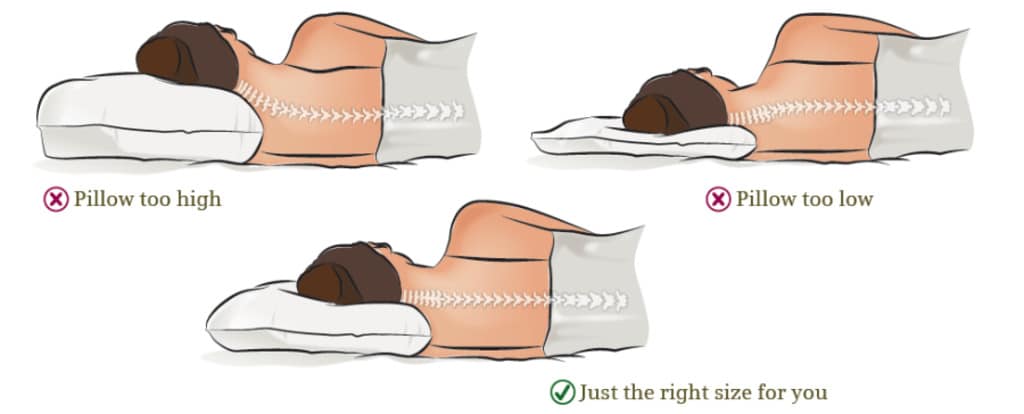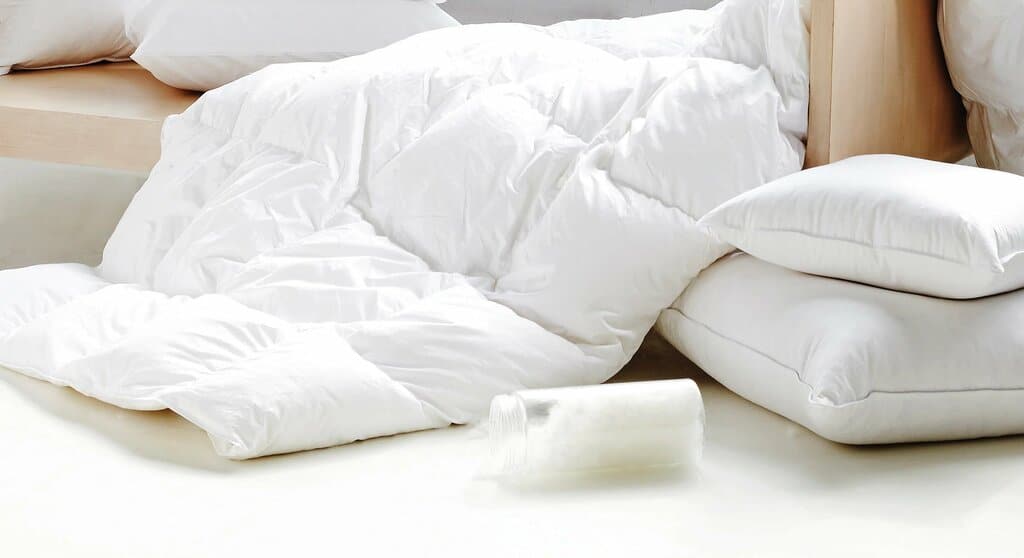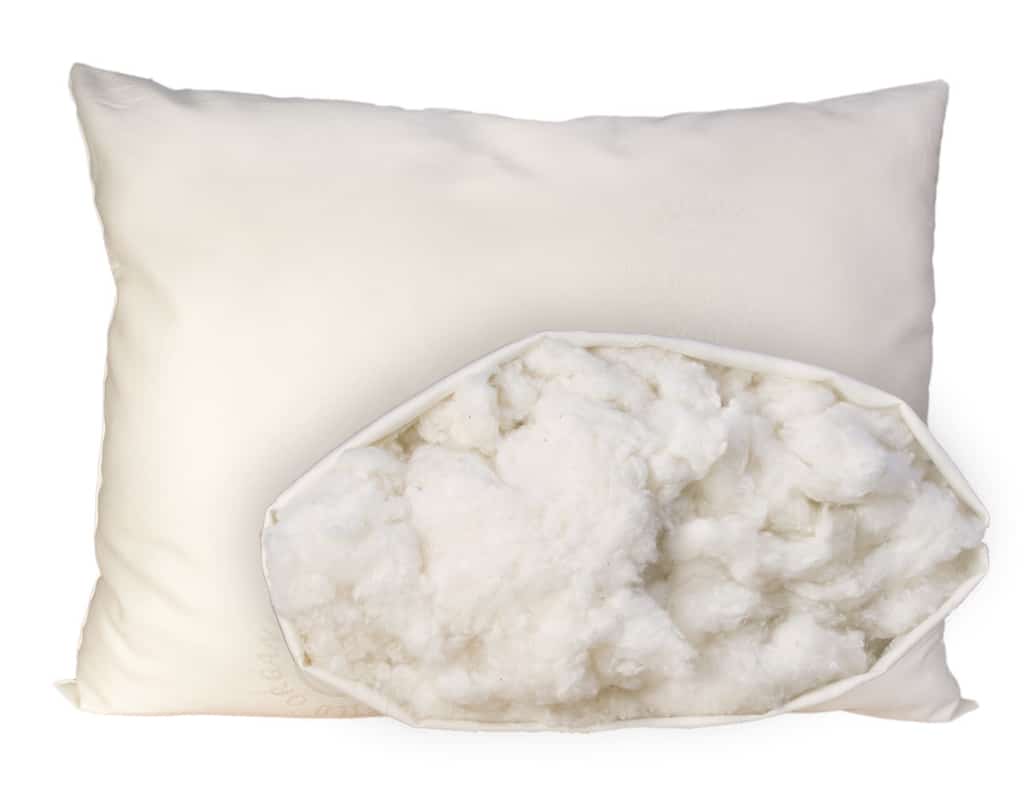When we were young, pillow type or quality didn’t matter that much. As long as we are tired, we sleep almost anywhere, with or without a pillow! However, now that we have grown to become full-fledged adults, suddenly, sleep, mattresses, pillow types, and quality matters!
Well, as we grew up into and entered adulthood, sleep became somewhat like a luxury. Hustling means you may not even get the recommended hours of sleep! And with that, we want to make every minute of your sleep count. This means that sleeping quarters must be optimized for rest. That includes mattresses, sheets, room temperature, and pillow.
How to Choose a Pillow for your Bedroom

Sadly, there’s no one-size-fits-all pillow that would magically rid you of neck pain and give you a good night’s rest. To help you choose the right pillow for your needs, here are some tips on how you could get the right pillow that suits your needs:
Step 1 – Select pillow firmness based on a sleeping position

We usually sleep on our side, on our back, or our belly. The key is getting a pillow that suits your sleep position. Each position may require different levels of pillow firmness and thickness.
If you sleep on your back, a soft pillow will accommodate your neck and shoulders’ curve while maintaining the natural curvature of your spine alignment while lying down. A stiff pillow may exaggerate the neck curve upward and may result in some discomfort or neck pain. In some cases, the pain could extend to the shoulder muscles and upper back.
For side sleepers, a firmer pillow will catch your ears and cheeks while maintaining your neck aligned to your spine, parallel to your bed.
Sleeping on your belly is not generally encouraged. When you lie on your stomach, you are forced to tilt your head upward on your left or right to keep your airway free. However, some people find it more comfortable when sleeping on their bellies.
If you find it difficult to sleep on your back or your side, the next best thing that you can do is find the best pillow for your position. A thin pillow is recommended to reduce the tension on your neck and shoulder. Also, your neck and spine would be properly aligned, and won’t be tilted upward.
Step 2- Consider your medical condition

For some of us, we have medical conditions that keep us from having a good night’s sleep. One of the best examples of this type of medical condition is snoring or sleep apnea.
For example, some types of wedge pillows can help you reduce or get rid of snoring. People who are experiencing sleep apnea may need a specialized pillow with an ergonomic size and shape to make sure that the airway is intact and uninterrupted while sleeping.
Step 3 – Choose the right pillow filling

The type of filling you choose determines the overall feel of your pillow. Temperature, firmness, shape, and pillow hygiene can be affected by the filling you use. Here are some of the typical pillow fillers and their main attributes.
Feather and down fillings

Feather fillings follow the contour of your head, neck, and shoulder while you lie down, making them ideal. Its shape is easy to restore when you feel like it’s overly compressed.
One of the best things about feather pillows is its longevity. You can machine wash it on your own to restore its freshness.
The primary drawback and reason why you would not choose a feather pillow is allergy. If you have known hypersensitivity, you better steer away from it. It’s expensive too, so it may not be the best option if you’re on a budget.
Memory foam filling

Memory foam is another popular choice that offers excellent value. It conforms to the sleeper’s movement and reverts to the original shape when not in use. It also gives excellent neck support as it follows your shape and compresses in response to applied weight.
The one thing you may not like about memory foam is its poor heat dissipation. If you find yourself sweating at night while you sleep, choose a memory foam with gel infusion technology to enjoy a cooler sleeping surface.
Wool filling

Wool is another hygienic pillow filling that you can easily wash on your washing machine. It’s also cool and breathable like feather pillows. They are hypoallergenic. This is an excellent choice if you are allergic to dander. It’s a bit stiffer than feather and provides excellent neck support for side sleepers.
The only drawback you may encounter is the price point of this filling. Wool pillows are some of the most expensive pillows available today.
Cotton filling

Cotton is a good choice. It’s somehow comparable to the firmness of wool, but it’s a lot more affordable. Although it’s not as breathable as wool, it would work just fine and serve its purpose.
The problem is cotton is highly absorbent so it isn’t good at repelling or wicking moisture. In the long run, cotton pillows would require more frequent washing to keep it clean and fresh. Cotton pillow filling is not the most hygienic choice among the rest.
Step 4 – Select a comfortable pillowcase

The function of the pillowcase is not limited to increasing the pillow’s longevity and durability. It also plays a significant role on how comfortable your sleep can be since your skin will be in direct contact with it. With that in mind, you should go for bamboo pillowcases as these offer a soft, smooth, and cold sleeping surface.
Conclusion
Choosing a pillow may seem like a simple task. But if you look deeply into it, you may find that it also has intricacies that could upgrade your sleep quality and prevent neck and shoulder pain! The amount and quality of your rest significantly affect your performance at work and your relationship with people.
To find out more:-

